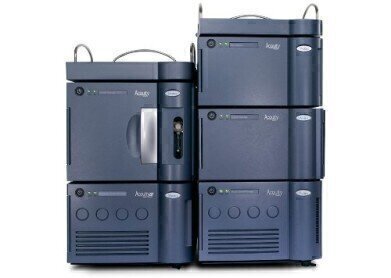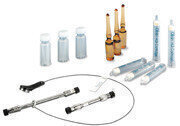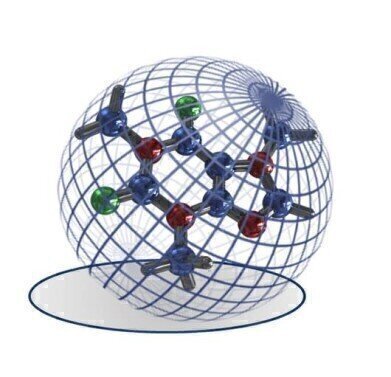Water/Wastewater
Analysis of Natural and Synthetic Estrogens at Sub-PPT Levels in Water and Crude Influent Water
Jun 08 2016
In this technology brief we describe the analysis of 17β-estradiol, estrone and 17α-ethinylestradiol in surface water, crude influent, and final effluent from a waster water treatment plant utilising Waters Oasis HLB off-line Solid Phase Extraction (SPE) followed by 2D LC-MS analysis on the ACQUITY UPLC System with 2D LC Technology, coupled to the Xevo TQ-S Mass Spectrometer. In the EU directive 2013/39/EU, 15 additional priority substances were added to the water framework directive (WFD, 2000/60/EC). In this latest update, 17α-ethinylestradiol and 17β-estradiol were not included in this list but instead added to a watch list in order to gather further data regarding the presence of these compounds in aquatic environments and the risks they pose. This method has undergone a full validation and was found to meet the required performance criteria for this challenging analysis.
Ultra Low-Level Detection of Perfluoroalkyl Sustances (PFASs) Using the PFC Analysis Kit
As a result of their widespread use and subsequent leaching from materials, PFASs have been found in various environmental and biological samples. PFASs are also ubiquitous in the laboratory environment, namely in Teflon components used in analytical equipment. Waters PFC Analysis Kit specifically addresses this challenge. The kit is comprised of PFAS-free components to ensure a clean system, a sample preparation protocol, along with standards, columns, vials and caps. The PFC Analysis Kit can be implemented on the ACQUITY UPLC I-Class System and Xevo TQ-S to achieve ultra-sensitive detection of routinely monitored PFASs.
Demonstration of Collision Cross Section (CCS) Value Conservation Across LC and GC Analyses
Contaminant identification in food and environmental matrices using both GC and LC-MS techniques are widely implemented, although challenges with matrix effects, false detections, and reproducibility of ion ratios exist. In this technology brief we demonstrate the application of travelling wave ion mobility spectrometry (TW-IMS) coupled to a quadrupole time-of-flight (QTof) MS to generate a robust and unique additional identification point for contaminant analysis. The determination of a collision cross section (CCS) of an ion can be extrapolated from the observed drift time as the ion passes through the drift cell. To demonstrate the robust and precise nature of CCS values, a suite of pesticides were analysed under both GC and LC conditions, and the CCS values obtained compared.
Digital Edition
AET 28.2 April/May 2024
May 2024
Business News - Teledyne Marine expands with the acquisition of Valeport - Signal partners with gas analysis experts in Korea Air Monitoring - Continuous Fine Particulate Emission Monitor...
View all digital editions
Events
Jul 30 2024 Jakarta, Indonesia
China Energy Summit & Exhibition
Jul 31 2024 Beijing, China
2024 Beijing International Coal & Mining Exhibition
Aug 07 2024 Beijing, China
IWA World Water Congress & Exhibition
Aug 11 2024 Toronto, Canada
Aug 25 2024 Stockholm, Sweden and online











.jpg)








